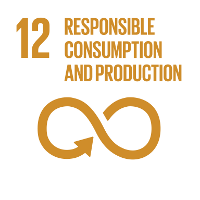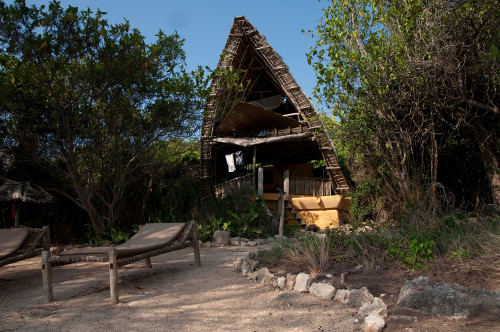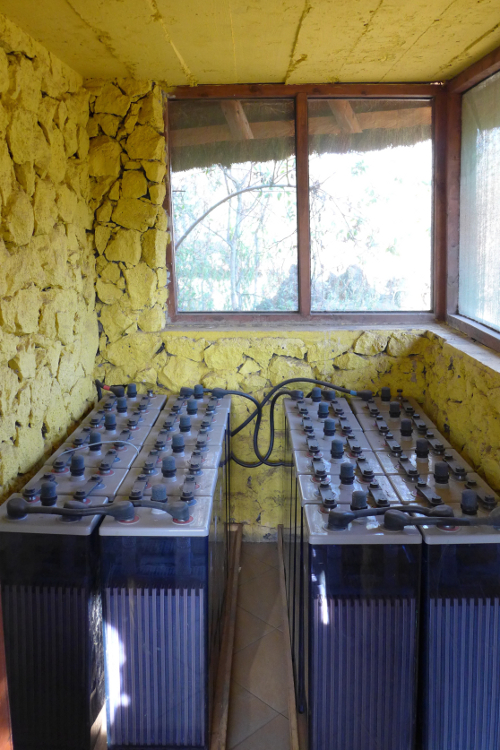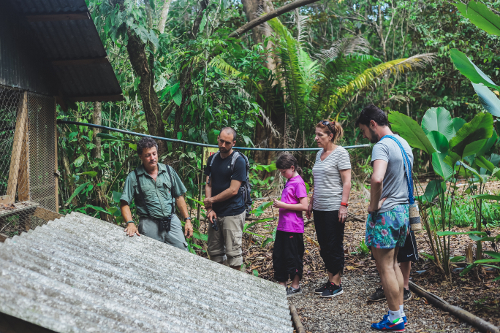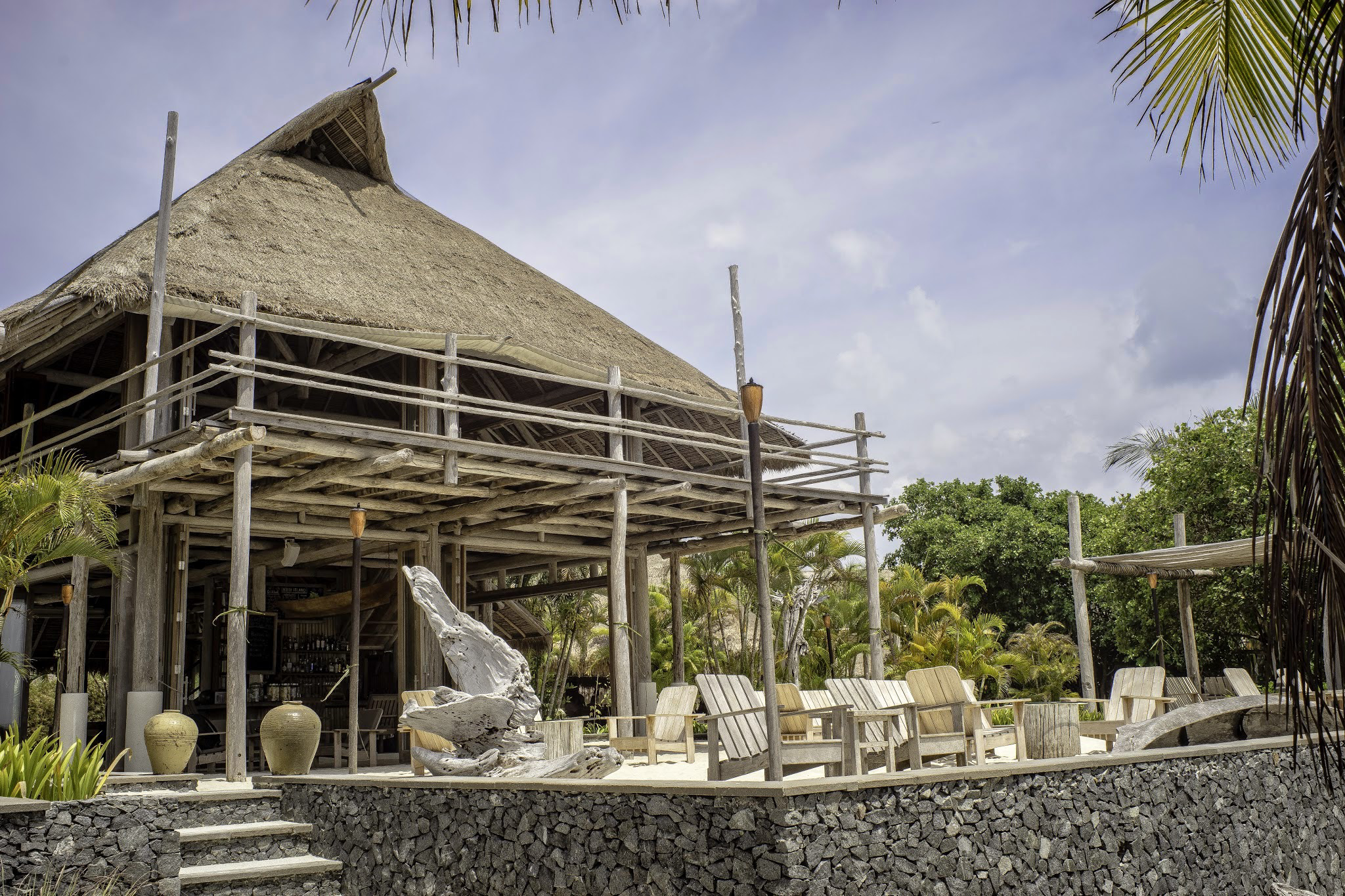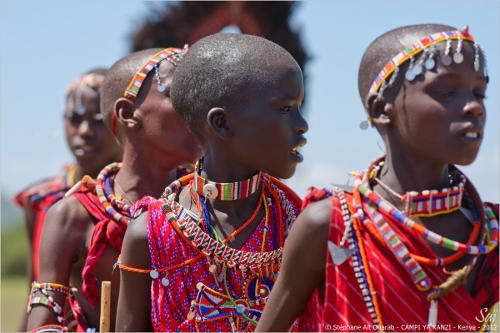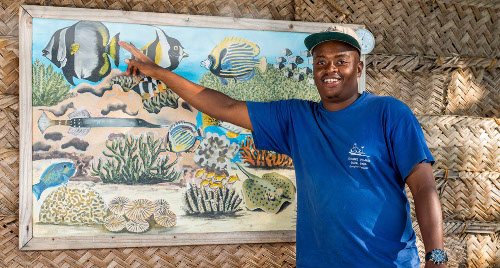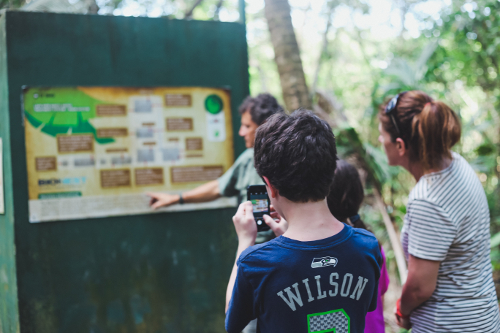Do more, better, with less, in an increasingly consumerist world
If the global population reaches 9.6 billion by 2050, the equivalent of almost three planets may be required to provide the natural resources needed to sustain current lifestyles. We need to drastically change how we consume and produce goods and resources. Tourism’s contribution of 10% of global GDP represents a significant responsibility in production and consumption.
In 1987, the UN-created ‘Brundtland’ Report of the World Commission on Environment and Development found that growth in developing and industrialised nations would prove unsustainable: rates of growth were greater than the ability to meet them, thus coining and defining,
“Sustainable development is development that meets the needs of the present without compromising the ability of future generations to meet their own needs."
Otherwise, as we have seen in the last century, economic and social progress comes at the expense of environmental degradation that endangers the very systems on which our future development — and our very survival — depends. The planet has limited resources, but it appears humans have unlimited wants.
The report was concerned with meeting basic needs for all, redistribution of resources for equity, recognising technological change was required in the three core components of sustainable development’s “triple bottom line”: the environment and its protection, the economy and its growth, and society and its equality. It means decoupling economic growth from environmental degradation.
A great deal of waste is created by many, while a large share of the world population consumes far too little to meet even basic needs. The report called upon human kind to be more efficient and effective with utilisation of resources, to do more better with less, and to reduce inequality with the utilisation of natural resources. It aimed to create a united international community with shared sustainability goals by identifying worldwide sustainability problems, raising awareness about them, and suggesting the implementation of solutions.
This became the foundation for the current framework – the UN 2030 Agenda for Sustainable Development, from which the Sustainable Development Goals arise.
Thus Goal 12 of the UN 17 Global Goals of the 2030 Agenda for Sustainable Development is:
SDG #12 “Ensure sustainable consumption and production patterns.”
This contributes to many of the SDGs, such as food and waste, water, energy, marine resources, equalities and ending poverty.
Reporting on SDG 12 needs to show the impact of consumption and production patterns on planet and people's health and includes a call to tourism to measure impacts and promote local culture and goods* (see below).
Progress on Sustainable Development Goal 12 Responsible Consumption & Production
$427 billion: 2018’s fossil fuel subsidies that contribute to the crisis; increased from $318 billion in 2015.
$120 billion: the possible savings if the world merely switched to energy efficient light bulbs.
85.9 billion tons: the global material footprint, up from 73.2 billion tons in 2010.
1.3 billion tons, or 1/3 food, is wasted every year, worth $1 trillion – while 2 billion people go hungry or under-nourished, and 2 billion are overweight or obese.
70%: The amount of world water used in agriculture.
38%: the growth in electronic waste (2010-2019), growing from 5.3 to 7.3 kilograms per capita annually; ess than 20% is recycled.
22%: The greenhouse gas emissions emitted by the food industry. 1/3 food waste represents 8% emissions, the same as tourism.
13.8%: the food lost in supply chains (2016)
The Impact of Covid on SDG 12 Responsible Consumption & Production
Covid has underscored the importance of the relationship between people, our health and nature, from which we get our resources.
We may better appreciate the limits to which humans can push nature, before the impact is negative, and understand those limits must be reflected in our consumption and production patterns.
Fossil fuel subsidies may contribute to COVID-19 mortality rates, based on the link between air pollution, respiratory illnesses and the severity of COVID-19 infections.
Medical waste, much single-use, has added to mounting waste worldwide.
Build Back Better: The pandemic offers the oportunity to develop recovery plans that build a more sustainable future.
This is a chance to create a systematic shift to social change for sustainable lifestyles.
Challenges of SDG12, Responsible Consumption & Production
Material Footprints
Achieving Goal 12 requires strong international, national and sectoral plans for sustainable policy frameworks and procurement by governments and employers to change business practices and consumer behaviour.
Whilst organisations are beginning to align sustainability strategies, SDG 12 has shown worsening trends. As developing regions industrialise, their use of raw materials grows.
A material footprint is the amount of primary materials required to meet basic needs such as food, clothing, water, shelter, infrastructure - an indicator of pressure on environmental resources.
Domestic material consumption per capita (the total amount of natural resources used in economic processes per person) is increasing in almost all developing regions, due in part to rising natural resource use worldwide, in particular in Eastern Asia (growing middle class).
In 2015, the material footprint per capita in high-income countries was over 10 times larger than in low-income countries.
That said, from 2000 to 2010, the material footprint per GDP of developed regions dropped as a result of greater efficiency in industrial processes. But at 23.6 kilograms per unit of GDP in 2010, it was still substantially higher than the figure for developing regions at 14.5 kilograms per unit of GDP (UN Stats).
As more people globally join the middle class, in particular in large developing countries, changes that are good for individual prosperity will increase demand for already constrained natural resources and materials, likely outpacing efficiency gains in supply chains.
Urgent action is needed to decrease our reliance on raw materials and move from a 'take-make-waste' linear model to the ‘regenerative by design’ circular economy approach through its three principles of design out waste and pollution from the start; keep products and materials in use; and regenerate natural systems.
Fossil Fuel Subsidies
Fossil fuel subsidies create irreparable harm by incentivizing activities that produce large amounts of greenhouse gas emissions, with adverse consequences including air pollution, global warming, and potentially contributing to Covid-19 mortality rates, with a link to vulnerability due to respiratory illnesses.
The continued subsidising of fossil fuels is counterproductive to the global goal of reducing emissions. Fossil fuel subsidy reform could be a valuable tool for re-allocating scarce public resources needed to finance COVID-19 relief and recovery.
Waste
Waste and waste management is an increasing issue in the world. The global waste trade occurs between countries for further treatment, disposal, or recycling, often imported by developing countries from developed countries exporting responsibility on waste.
Electronic waste (e-waste) - discarded electrical or electronic devices - is rapidly growing due to technological advances, changes in media (tapes, software, MP3), falling prices, ‘planned obsolescence’ and consumerism, mostly from the United States and Europe, mostly shipped to developing countries in Asia and Africa for processing.
The trade in plastic waste has been identified as the main cause of marine litter. Countries importing the waste plastics often lack the capacity to process all the material. As a result, the United Nations has imposed a ban on waste plastic trade unless it meets certain criteria.
Chemical waste from hazardous chemicals, mainly produced by large factories, is also traded, as it’s extremely difficult, regulated and costly to dispose of, posing health risks upon exposure, and must be carefully treated in special processing facilities.
The global waste trade has had negative effects for many people, particularly in poorer, developing nations. These countries often do not have safe recycling processes or facilities and waste is mostly handled by the informal sector. Open burning or acid baths pollute the environment, children play on waste sites, and people process even toxic waste with bare hands, resulting in severe health effects and death in people and animals and disastrous effects upon the environment, natural ecosystems and valuable and scarce resources.
10YFP
The UN’s 10-Year Framework of Programmes on Sustainable Consumption and Production Patterns (10YFP), adopted at the United Nations Conference on Sustainable Development in 2012, asks every country to take action to their best capacity. The aim is to generate collective impact through multi-stakeholder programmes, which develop, replicate best practices and scale up action-oriented initiatives, knowledge sharing through experience, and facilitate access to technical and financial resources for developing countries, building synergies and cooperation.
Affluent countries with innovation, infrastructure and development are able and called to lead the way in taking responsibility, helping improve the science and technological base for better technical capabilities to enable more sustainable consumption and production in developing countries.
It may mean removing market distortions, such as inefficient, unsustainable use of resources like fossil fuel subsidies, to reflect environmental impacts, whilst taking into account poor and developing communities’ needs and conditions.
Implementation of SDG 12 requires tough changes to the major contributors of consumerism and overconsumption, reducing ecological footprints to allow for regeneration of natural resources on which human life and biodiversity can continue to depend.
In this way, the effects of a sustainable lifestyle go beyond preserving the earth’s natural resources, but can address unequal consumption in society and help reduce the increasingly widening gap between the rich and poor.
Just and equitable ways to meet individual needs and aspirations within the ecological limits of the planet are needed.
What’s it got to do with tourism?
#SDG 12 is one of three global goals which specifically mentions tourism in its targets (12b),
“A tourism sector that adopts sustainable consumption and production (SCP) practices can play a significant role accelerating the global shift towards sustainability”…“develop and implement tools to monitor sustainable development impacts for sustainable tourism which creates jobs, promotes local culture and products”.
SDG 8 for sustainable economic growth and productive employment also mentions tourism specifically and is inherently linked to Goal 12 in target 8.1, “endeavour to decouple economic growth from environmental degradation” for sustainable consumption and production.
Sustainable consumption and production calls on both consumer demand, retail and industry supply to more sustainably manage and efficiently utilise natural resources. It will require essential changes in how the society and our livelihoods operate.
Such a large-scale societal transformation is going to take a long time: time we don’t have given the urgent unsustainable use of resources. Immediate action for such magnitude is urgent.
How can tourism help?
Sustainable tourism places the eradication of poverty at the heart of its activities, in particular through the creation of livelihoods through sustainable tourism.
The #10YFP Sustainable Tourism Programme
The UN 10-Year Framework of Programmes on Sustainable Consumption and Production Patterns has a specific Sustainable Tourism Programme (STP) aimed at developing such practices, led by the World Tourism Organization (UNWTO). The One Planet Network collaborative platform aims to bring together partnerships and facilitate activities to advance the implementation of Sustainable Development Goal 12, plus deliver progress under connected goals, such as climate action and the protection of marine and land ecosystems.
Projects include labelling, criteria and standards systems for sustainable destination designations, plastics, hygiene and Covid, technical tools development, guidelines and training in sustainable tourism.
Earth Changers was delighted to be accepted by The UN World Tourism Organisation as a solution to sustainable tourism for development.
Sustainable buildings and construction
Many of Earth Changers' partners developed their buildings right from construction with sustainability at core, incorporating the reduction of emissions that cause climate change and the strengthening of resilience.
The banda bungalows at Chumbe Island Coral Park, are designed for optimal outside rainwater catchment, captured by a cistern underneath the bungalow for showers in the downstairs bathroom. The composting toilets have zero sewage and no flush as water is too sparse. Solar panels, unobtrusive on the top of the roof, provide charge for battery storage for energy requirements, including hot water heating. And with the front façade of the bandas lowerable, there’s no need for air-con!
Lapa Rios’ bungalows and shared areas are all designed in harmony with surrounding forest and beaches, to honour place, using local and renewable materials such as bamboo, wood and local vines, with a ceiling fan and screened open-air requiring no air conditioning but enabling the experience of the sounds, sights and smells of the rainforest and the ocean.
At Nikoi Island, the villas are designed to encourage air-flow with master bedrooms raised off the ground and vaulted ceilings, so as to avoid air conditioning and minimise energy consumption and noise pollution. Water filtering, treating and pressurising accounts for around 30% total energy use, so simple measures are employed like highly efficient shower heads reduce water consumption by 20%, and reject water from the desalination unit tops up the salt water swimming pool, reducing the need not only for fresh water but also imported salt.
Campi ya Kanzi, was built to make ensure the lowest impact on the environment. Renewable energies are used and the camp is completely self-sufficient with water from rain, including in the Kanzi House swimming pool. All materials used are sustainable, natural and collected locally, such as thatched roofs, lava rock, wood for building and furniture and African raffia linens, and landscaping or tree felling is avoided.
At Tiger Mountain Pokhara Lodge rendered exteriors are traditionally plastered with a mud and cow dung mixture. All exterior wood is maintained with a natural turpentine and mustard oil mix, furniture is protected using traditional chopra and walls are painted with traditional red emulsion consisting of all natural ingredients.
Reduce pollutants
Environmentally sound management of chemicals and all wastes going in to the air, water and soil is required in order to minimize adverse impacts on human health and the environment. Whilst most UN member states are party to at least one of 6 conventions on hazardous waste management, meaning obligations such as submitting national progress, reporting has been declining since 2010.
Man is polluting water faster than nature can recycle and purify water in rivers and lakes: Millions of people still do not have access to fresh water; whilst free from nature, expensive infrastructure is needed to develop it.
Increases in vehicle ownership, motor vehicle kilometres huge growth in global air travel (outside the pandemic) will add to pollutants.
Most Earth Changers’ partners, like Lapa Rios are very conscious of the use of chemical toiletries in their fragile environments and ask that you use organic, locally-made products provided.
At Tiger Mountain, this extends to the gardens too, where only compost, animal manure, and organic fertilisers are used.
At Chumbe Island, imported materials are carefully screened to avoid any non-indigenous elements polluting the spectacularly preserved environment.
Laundry is washed off the island. The purchase of non-biodegradable products is avoided and non-biodegradable waste removed from the island and, where possible, recycled.
Reduce food waste & loss
The food sector accounts for around 30% of the world’s total energy consumption and accounts for around 22% of total Greenhouse Gas emissions, food waste alone for 8%.
Substantial environmental impacts from food occur in the production phase (agriculture, food processing), then households influence these impacts through their dietary choices and habits. This consequently affects the environment through food-related energy consumption and waste generation.
At Nikoi Island, the menu is fixed to reduce food waste and focus on seasonality – homemade, naturally organic, complying to guidelines, such as WWF sustainable seafood. Any food waste is composted where possible.
At Lapa Rios and Jicaro Island Ecolodge, the ‘Twigs, Pigs and Garbage’ sustainability tour sees how any food waste goes to the pigs, creating methane used to fuel the staff kitchen stove!
At Chumbe Island, non-cooked fruit and vegetable waste is collected, composted and used for the composting toilets on the island.
Land degradation, declining soil fertility, unsustainable water use, overfishing and marine environment degradation are all lessening the ability of the natural resource base to supply food as 1 billion people go undernourished and another 1 billion hungry.
Yet an estimated one third of all food produced ends up wasted every year in bins of consumers, retailers, or spoilt due to poor transportation and harvesting practices. In addition, over consumption of food is not only detrimental to the environment but also our health.
Globally 2 billion people are overweight or obese, while 2 billion are undernourished or hungry. (UN Stats)
Reducing food losses could have an effect on reducing global food prices, benefiting the poor, which must subsequently be aligned with increased sustainable consumption. Sustainable food systems are critical to improving food security, nutrition and wellness and to poverty alleviation.
The 3 Rs: Reduce, Reuse and Recycle
Tourism organisations can implement many practices for resource use reduction, recycling and reuse, whether water or plastics.
At Campi ya Kanzi, visitors are issued with re-usable water bottles to be used during game drives and to take-away as souvenirs; waste tyres given to the Maasai community to re-use as water troughs for cattle; tetra packs re-used to grow tree seedlings and glass bottles re-used to serve drinking water in guest tents. Non-recyclables go in an incinerator specially-built on a UN recommendation to minimize impact.
At Nikoi Island, everything is recycled, reused or upcycled. Second hand machinery is used if possible rather than new bought unnecessarily. The villas were all constructed solely from sustainably sourced driftwood, some into furniture which was all made on site, unfinished wherever practical or with natural oils and waxes. All recyclable waste is sent to Bintan island where it is sold/given to local collectors, but as only a limited glass recycling program exists there, Nikoi have installed a glass pulveriser to process glass bottles to make glass sand then used in cement. Some things just aren’t needed or supplied – such as plastic straws or drinks in plastic bottles– instead handmade bamboo straws and own-made carbonated water and natural organic syrups and are offered.
Sustainable practices & monitoring impacts
Sustainable sourcing is an important aspect of sustainable tourism, helping to create jobs and promote local culture and products. It is also vital that sustainable tourism organisations monitor their impacts – without which, they cannot measure and improve (a prerequisite for Earth Changers’ partners, given our positive impact purpose).
At Chumbe Island Coral Park, local people have been offered income opportunities through the construction and maintenance of the ecolodge, food supplies, the out-sourcing of transport operations and handicrafts sold in the boutique.
At Nikoi Island, many of the goods and souvenirs in the shop are locally made from recycled products, such as flip flops made from car tyres and bags made from recycled rice sacks.
Campi ya Kanzi created its boutique Maasai showroom selling locally made handicrafts to support continuation of cultural beading, later augmented with more Kenyan jewellery, clothing, books, bags and other handmade arts and crafts, bought locally at fair prices.
Campi ya Kanzi also measure and monitor energy consumption and carbon emissions monthly, with sub-meters in all guest rooms. All guests charged a nominal fee for carbon generated during their stay with the limited emissions offset in the MWCT REDD+ Chyulu Carbon Project: Carbon footprint zero is achieved.
It is in the interest of business to find new solutions, and hotspots in the supply chain where interventions can have the greatest impacts. A better understanding of environmental and social impacts of products and services is needed, both of product life cycles and their lifestyle use. Businesses can integrate this learned information into their reporting cycle and so help teach others.
Increase awareness of sustainable development
A major requirement for successful adoption and implementation of this SDG is education. Business owners, policy makers, and consumers must know the benefits of demanding and practicing sustainable consumption and production. The goal of consumer information on sustainability is to ensure that everyone has access to reliable understandable information on the sustainability of goods and services, relevant for lifestyles in harmony with nature. Many of our partners invest heavily in educating guests about sustainability:
At Campi ya Kanzi, guests are briefed on energy and water consumption and conservation upon arrival; visual signage acts as reminders in strategic areas.
Likewise at Tiger Mountain Pokhara Lodge, through the welcome briefing and the room information pack, guests are advised on minimising fuel, water, waste, chemical consumption and encouraged to give feedback.
At Chumbe Island, a dedicated research board informs visitors about the ongoing scientific research it facilitates with the academic and scientific community around the world, with the most recent scientific publications and reports made available on the website,
Both Lapa Rios and Jicaro Island Ecolodge take great pride in transparently showing guests the ‘back of the house’ systems and operations to demonstrate and teach about their sustainability, with suggestions how guests’ own ways of living could be enhanced.
Through sustainable lifestyles and education, sustainable practices in daily life help to minimize the negative impact of environmental change for the most vulnerable and contribute to the creation of new income opportunities and of more diversified and sustainable livelihoods.
At Earth Changers, this is one of our aims for sustainable development through tourism. We hope we educate. Please connect on our social channels too to share and help others learn too!
Links with the other Sustainable Development Goals
Sustainable consumption and production is transversal - inherently interlinked with most of the other SDGs:
Goal 1 - End Poverty: Sustainable consumption and production will help alleviation.
Goal 2 - Zero hunger: Sustainable consumption and production will help provide food where required.
Goal 3 - Health & Well-Being: Sustainable consumption and production will help provide nutrition and eliminate toxic pollutants.
Goal 4 - Quality education: Sustainable consumption and production requires education for understanding and implementation.
Goal 6 - Access to clean water and sanitation requires sustainable consumption and production for effective natural resource management.
Goal 7 - Affordable, reliable, sustainable and modern energy is required for sustainable consumption and production.
Goal 8 - Economic growth & productive employment is required for sustainable consumption and production.
Goal 9 - Without sustainable infrastructure, industrialization and innovation, sustainable consumption and production cannot develop.
Goal 10 - A prerequsite for global equality is sustainable consumption and production.
Goal 11 - Sustainable cities are required, where sustainable consumption and production will largely occur.
Goal 13 - Climate change – adverse weather patterns can have a huge impact on sustainable consumption and production opportunities.
Goal 14 - Marine environment conservation is required to support the natural resource base and sustainable consumption and production.
Goal 15 - Life on Land - is required for the sustainability of the earth's natural resources, and sustainable consumption and production.
Goal 17 - Partnerships - an ecosystem of support is required for sustainable consumption and production.
Next: SDG 13 Climate Change >
< Sustainable Cities SDG11: Previous


